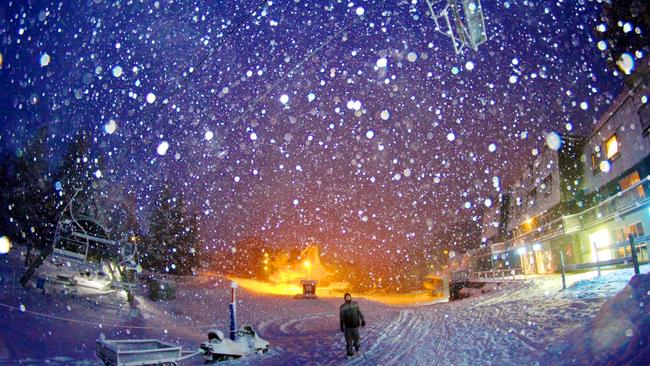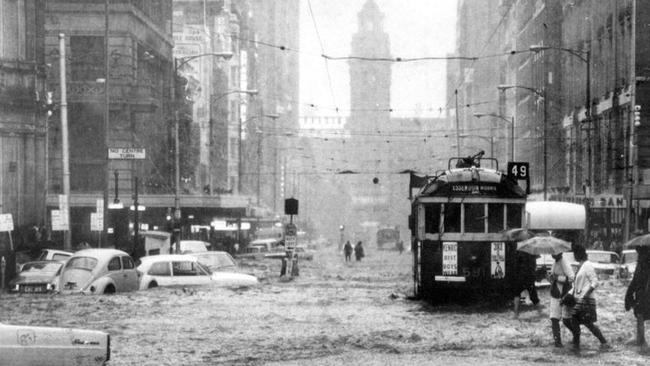How Melbourne, Victorian weather records compare with national climate extremes
Australia is a country of climate extremes, but how hot can it really get? We’ve run the figures to compare Melbourne and Victoria's worst weather with the rest of the nation.
VIC News
Don't miss out on the headlines from VIC News. Followed categories will be added to My News.
There's hot and then there's scorching.
But while a 43C day in Melbourne may feel like you're residing in hell, is it anywhere near that of Australia's hottest place, Oodnadatta in South Australia?
We might complain about the winter cold, but does the temperature really drop that low anywhere but high in Victoria's ski fields? Let's take a look at how Victoria's weather extremes from heat to rainfall compare to the rest of the nation.
BOILING POINT: MELBOURNE'S HOTTEST DAY
HOW TO DRIVE LIKE A MELBURNIAN
HIGHEST TEMPERATURE
The highest temperature ever recorded in Victoria was 48.8C at Hopetoun Airport in the Mallee on February 7, 2009 – Black Saturday.
Days of searing heat built to a disastrous crescendo that day, when 173 people died in bushfires across the state.
That day, Melbourne hit a record high of 46.4C, and it got to 47.9C at Avalon Airport, near Geelong.
That mark is not far short of the Australian maximum temperature record, set at Oodnadatta Airport in outback South Australia on January 2, 1960. The mercury hit 50.7C that day.

LOWEST TEMPERATURE
Some love to complain about our bitter winters in Victoria, but the Bureau of Meteorology’s records show it could be a whole lot worse.
Melbourne’s lowest ever temperature was -2.8C on July 21, 1869, but temperatures can get lower in some outer suburbs.
The state record lowest temperature is -11.7C, which was recorded twice - on July 3, 1970 at Falls Creek and at the Omeo Comparison weather station on June 15, 1965.

But -11.7C isn’t even close to the national record.
At Charlotte Pass in the Snowy Mountains in NSW, the minimum temperature hit a record low -23.0C on June 29, 1994.
The temperature has dropped below -20C only one other time, again at Charlotte Pass when the minimum reached -20.6 on August 14, 1968.
WETTEST DAY
A powerful La Nina was the catalyst for the wettest single day ever recorded in Victoria. At Tidal River, on Wilsons Promontory, 377.8mm of rain fell on March 23, 2011.

Melbourne’s wettest day was 113.4mm on February 3, 2005.
But those are way down the list on the wettest day ever recorded in Australia, which has stood for more than 120 years.
That record goes back more than 120 years.
Crohamhurst, on the Sunshine Coast hinterland in Queensland, was deluged with 907.0mm of rain on February 3, 1893.
WETTEST MONTH
The wettest month ever recorded in Victoria occurred at Falls Creek in July 1964, when 989.6mm tumbled into the gauge.
Melbourne’s wettest month was in February 1972, when 238.2mm filled the gauge.
A flash flood swept through the Melbourne CBD on February 17 that year.

Again, that’s a drop in the bucket compared to the record holder.
That’s Bellenden Ker Top Station, on the top of Queensland’s second highest mountain, Mt Bellenden Ker, just south of Cairns. There, 5387.0mm fell in January 1979.
WETTEST YEAR
Bellenden Ker Top Station also takes the honours for the wettest year ever recorded in Australia, with 12,461.0mm in 2000.
Victoria’s wettest place is Falls Creek. In 1956 – a year of devastating floods in the Murray Valley, 3738.5mm of rain fell there.
Melbourne’s wettest year was 1916, when 967.5mm fell.
The city’s average annual rainfall since 1855 is 648.3mm.
READ MORE:


